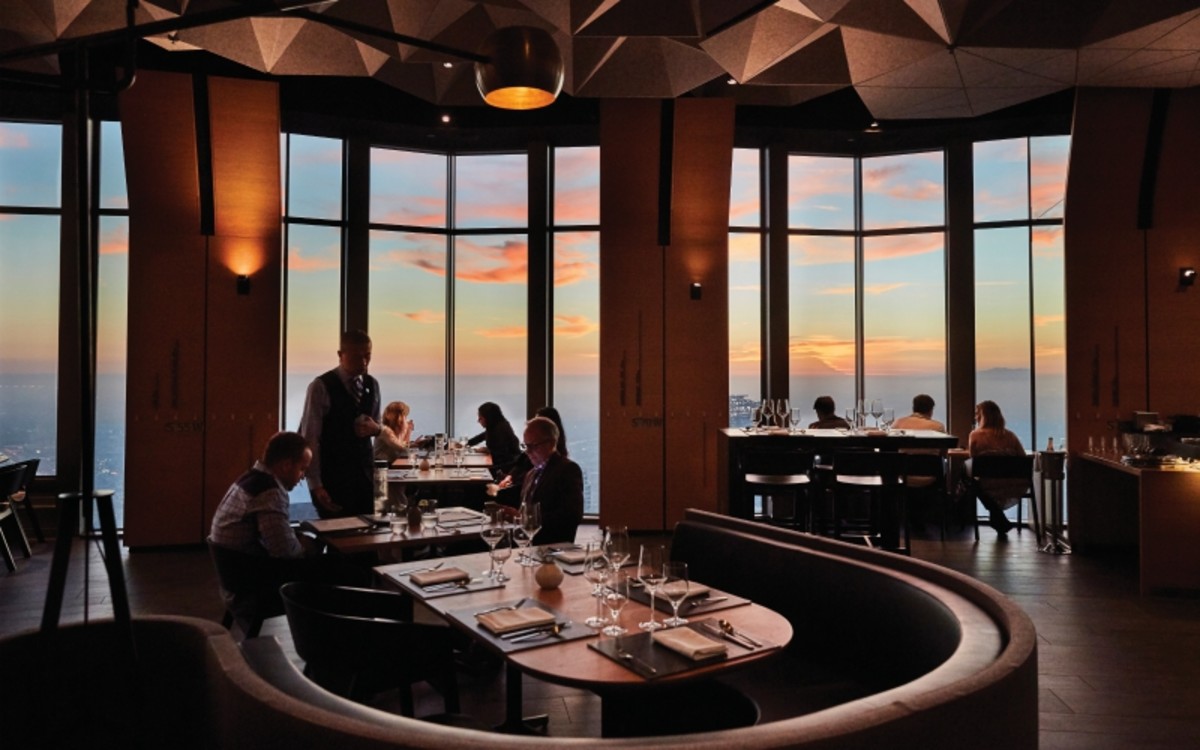Savor Genuine Eastern Food With a Pan-Asian Spin for a Culinary Experience
Starting a culinary trip with genuine Eastern food, enhanced with a Pan-Asian twist, offers an unique possibility to discover the abundant tapestry of tastes that define the region's diverse culinary practices. This experience welcomes you to relish the elegant equilibrium of tastes-- wonderful, salted, spicy, and sour-- balanced by aromatic herbs and seasonings. Imagine the innovative blend of Thai curry and ramen or the unforeseen pleasure of sushi burritos. As you ponder these luring meals, take into consideration the social narratives and historic impacts that shape them, each bite offering a tale waiting to be found.

Exploring Pan-Asian Flavors
In the world of worldwide gastronomy, Pan-Asian food sticks out for its remarkable variety and the unified interaction of flavors from different Eastern cultures. This culinary approach celebrates the abundant practices and special active ingredients found throughout the continent, developing a tapestry of preferences that is both fascinating and enjoyable. Secret to Pan-Asian cuisine is its capacity to stabilize different tastes-- wonderful, salted, spicy, and sour-- while highlighting the quality and quality of each component.
From the umami-rich soy sauce of Japan to the fiery chili peppers of Thailand, Pan-Asian food uses a substantial combination of tastes. These components are usually incorporated in inventive ways, improving meals with layers of complexity. For instance, using aromatic herbs such as lemongrass and cilantro, typical in Vietnamese and Thai food, adds a refreshing illumination to recipes, while the unification of coconut milk delivers a velvety, abundant structure.
The emphasis on fresh produce and aromatic spices ensures that each dish is not only a banquet for the preference buds however additionally for the detects. Pan-Asian cuisine welcomes diners to start a cooking journey, discovering the substantial and differed landscapes of Oriental gastronomy with every bite.
Blend Meals to Try
While Pan-Asian food is commemorated for its typical tastes, the contemporary cooking landscape is increasingly embracing combination recipes that mix these timeless aspects with impacts from other regions. This ingenious method not only honors the rich heritage of Asian cookeries but additionally presents novel taste experiences that interest contemporary palates.
A prime instance of such a blend dish is the Korean-Mexican taco, where marinaded bulgogi beef is wrapped in a warm tortilla, covered with kimchi and a spicy gochujang-infused salsa. This combination weds the vibrant, mouthwatering flavors of Korea with the dynamic, fresh elements of Mexican food. Likewise, sushi burritos have gotten popularity, joining together the fragile virtuosity of Japanese sushi with the passionate, hand-held comfort of a burrito, typically including combination components like tempura shrimp and avocado with a drizzle of wasabi mayo.
One more significant recipe is Thai curry ramen, which instills the creamy, fragrant spices of Thai curry right into the comforting brew of traditional Japanese ramen, creating a harmonious blend that entices the senses. These fusion meals expand past simple novelty; they represent a culinary dialogue between societies, encouraging expedition and advancement worldwide of Pan-Asian cuisine.
Important Components and Seasonings
To truly appreciate Pan-Asian food, one should recognize the essential active ingredients and seasonings that develop its structure. This varied culinary design draws from an abundant tapestry of Eastern practices, using a harmonious mix of flavors and textures. Secret ingredients consist of soy sauce, fish sauce, and oyster sauce, which impart a savory umami deepness important to Asian recipes. Complementary to these are rice vinegar and mirin, providing a delicate level of acidity and sweet taste.
Fragrant elements are pivotal, with ginger, garlic, and lemongrass being ubiquitous throughout numerous Pan-Asian recipes. These active ingredients offer a great smelling base that enhances the complexity of flavors. Seasonings such as star anise, cardamom, and cinnamon introduce warmth and personality, echoing impacts from areas like China and India.

Cooking Techniques and Tips
Grasping the art of Pan-Asian cuisine needs experience with its unique cooking techniques, each adding to the dynamic tapestry of flavors this cooking practice is commemorated for. Central to these approaches is the stir-fry, a fast cooking technique that protects the nutritional integrity and vivid shades of active ingredients. Utilizing a frying pan, the stir-fry approach permits also warmth circulation, crucial for attaining the particular texture and taste balance visit this page of Pan-Asian recipes.
An additional essential technique is steaming, particularly widespread in Chinese food. This gentle method keeps the all-natural flavors and nutrients of ingredients, making it excellent for fish and shellfish and veggies. Dumplings, a beloved staple, commonly gain from steaming, causing soft, succulent textures.
Cooking, also essential, gives smoky midsts to dishes such as Korean bulgogi or Japanese yakitori (Romantic restaurants Islamabad). This technique commonly involves seasoning components, permitting flavors to permeate deeply before cooking over an open fire or warmer
Lastly, understanding the art of stabilizing tastes-- sweet, sour, salty, bitter, and umami-- is essential. Properly layering these aspects can elevate a dish from common to amazing, providing a complicated and pleasing culinary experience that symbolizes the essence of Pan-Asian cuisine.
Dining Experiences Worldwide
Throughout the globe, Pan-Asian cuisine provides an unequaled dining experience, commemorated for its abundant tapestry of flavors and vivid presentations. This cooking phenomenon has actually transcended social borders, capturing the hearts and palates of food fanatics worldwide. In worldwide cities fresh York, London, and Sydney, Pan-Asian dining establishments offer as melting pots where culinary traditions from Thailand, Japan, China, and beyond assemble, offering restaurants with a diverse mix of dishes that highlight the region's diversity.
The global charm of Pan-Asian food lies in its ability to provide both credibility and technology. Cooks masterfully marry typical ingredients such as lemongrass, soy sauce, and miso with modern strategies, causing recipes that are both familiar and refreshingly brand-new. This fusion allows diners to get started on a cooking journey that appreciates heritage while welcoming modernity.
Additionally, dining experiences are boosted via attentively designed settings that show the ethos of Pan-Asian visual appeals. From minimalist Japanese-inspired insides to lively Thai-themed spaces, each restaurant uses a distinct ambiance that matches the culinary offerings. As an outcome, patrons are not simply consuming a meal however partaking in a social experience, making Pan-Asian eating an absolutely global sensation.
Final Thought
The expedition of Pan-Asian food uses an extensive understanding of the elaborate interaction of tastes and cooking practices across Asia. By welcoming combination recipes such as Thai curry ramen and sushi burritos, the cooking journey not just highlights the flexibility of traditional active ingredients however also showcases cutting-edge modern methods. This gastronomic experience, enriched by crucial spices and cooking techniques, offers a distinct possibility to appreciate the social variety and cooking virtuosity that define Pan-Asian cuisine on a worldwide scale.
Beginning on a other cooking journey through authentic Eastern food, boosted with a Pan-Asian spin, provides an one-of-a-kind possibility to check out the abundant tapestry of tastes that define the region's diverse culinary traditions.In the world of international gastronomy, Pan-Asian food stands out for its amazing variety and the unified interplay of flavors from different Eastern societies. Secret to Pan-Asian cuisine is its capacity to balance contrasting flavors-- sweet, salted, spicy, and sour-- while highlighting the freshness and quality of each ingredient.
